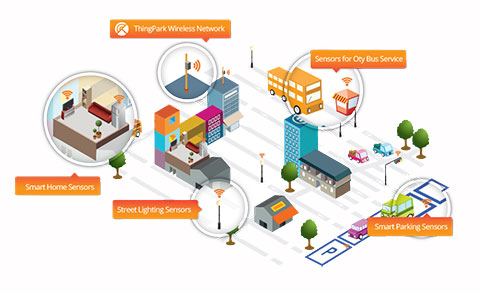The IoT is undoubtedly gaining rapid momentum, with major players such as Cisco stating that there could be as many as 50 billion ‘smart’ connected objects by 2020. However, while there has been much discussion surrounding connected consumer devices, such as cars, watches and thermostats, it will be the introduction of proper infrastructure that will be the catalyst of real industry transformation.
To maximise the IoT’s potential, such infrastructure must be simple, low cost and low maintenance, and must work seamlessly both indoors and outdoors; if you buy a connected device, it should automatically connect to the matrix.
While traditional cellular network evolution has always been about increasing speed and capacity for larger amounts of data, the business model for the IoT on a large city or country-wide scale is different – it is about connecting billions of things that are only transmitting tiny amounts of data, but may need to do so over long distances. The IoT on this scale will be about ‘0G’ rather than 4G or even 5G.
Classic M2M approaches based on GSM and SIM are not suitable for connecting so many objects or in the locations / deployments required for a waste management solution for instance. They both require expensive electronic elements which are fine for high value connected devices such as a car, but not in deployments that require far higher numbers of connected things at lower price points. Moreover, SIM cards are limited by their low power, needing access to a power source. While the IoT has evolved with the use of Wi-Fi and ZigBee, these are still limited by battery life, insufficient cell coverage and unmanaged LANs.
This is why we believe that Low Power Wide Area (LPWA) radio networks based on the LoRaWAN (Long Range Wide Area Network) open standard will be what will enable the IoT revolution to take hold. With LoRaWAN, entire cities or countries can be covered with a few base stations, no longer requiring the upfront rollout and maintenance of thousands of nodes as in traditional mesh networking. This has made the IoT possible now with minimal infrastructure investment.
With an integrated platform approach to an LPWAN network, MNOs can create a cost-effective service for any market sector that can operate for years on the same batteries. It has the ability to reach deep indoor applications, so is ideal for connecting meters located in basements, or sensors monitoring conditions deep underground, while the long range makes it ideal for the monitoring of livestock in remote rural areas, or tracking widely dispersed vehicle fleets. Even more importantly for successful business models, however, is that modems can be deployed for under five dollars, while annual connectivity can be offered for less than one dollar.
With a ubiquitous and cost-effective IoT network in place, the impact for key sectors of the economy, from manufacturing to logistics and agriculture, for example, will be huge. Indeed, GE Capital has stated that the industrial Internet, a global network connecting people, data and machines, has the potential to add $10 to $15 trillion to global GDP over the next 20 years.
Once LPWAN infrastructure is introduced at a regional, national or global level, the entire ecosystem of objects, solutions and applications will be able to blossom. This will result in factories, utilities, cities and people becoming more efficient, consuming less energy and ultimately creating a better world. To achieve this, technology vendors need to adopt standards, which will enable businesses to drive scale and the associated economics. After this has been achieved, the applications really are limitless.
By Olivier Hersent, CEO, CTO and Co-Founder of Actility










